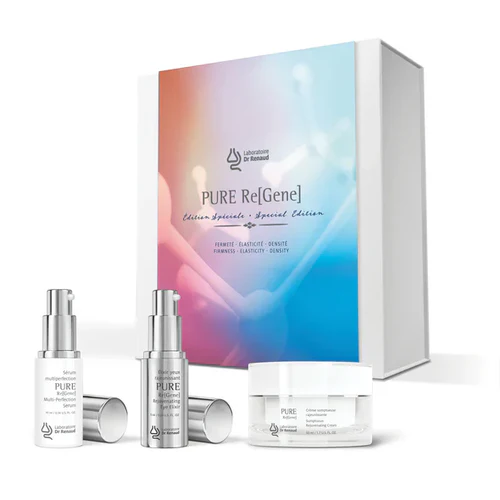Skin Care for Pigmentation, How to Even Out the Tone and Prevent Stains?
Hyperpigmentation is one of the most common skin issues, manifesting as dark spots, uneven tone, and localized darkening of certain areas. It can be caused by various factors: ultraviolet radiation, hormonal changes, inflammations, aging processes, or even improper skin care.
To effectively fight pigmentation, it is important to choose a comprehensive skincare routine, which includes:
- sun protection,
- use of lightening products,
- exfoliation and cell renewal,
- moisturizing and skin restoration.
Let’s look at each step of the skincare routine in more detail.
Causes of Pigmentation and How to Prevent It.
Before starting treatment, it’s important to understand what causes the appearance of pigment spots:
- UV Exposure – the sun is the main factor that triggers hyperpigmentation. Its rays stimulate melanin production, leading to dark spots.
- Hormonal Changes – pregnancy, oral contraceptives, or hormonal imbalance can cause melasma (hormonal pigmentation).
- Inflammation and Post-Acne – dark marks may remain after acne, especially if the skin is prone to hyperpigmentation.
- Age – as we age, melanin production becomes uneven, leading to age spots.
- Genetic Predisposition – some people have an inherited tendency to develop pigmentation.
Hyperpigmentation can be prevented with proper skincare, the most important aspect being daily sun protection. You can order all the necessary cosmetics for this at LACREMELUXE online store: https://lacremeluxe.com

Sun Protection Products – The Main Defense Against Pigmentation.
SPF protection is the first and most important step in caring for pigmented skin. Even the most effective whitening products will not yield results if the skin continues to be exposed to UV rays.
- Use sunscreen with SPF 30–50 every day, even in winter.
- Choose broad-spectrum products (UVA + UVB protection).
- For sensitive skin, opt for mineral filters (zinc oxide, titanium dioxide).
- Reapply sunscreen every 2-3 hours, especially in summer.
- Wear hats and sunglasses to reduce sun exposure.
Whitening and Brightening Products.
If pigment spots have already appeared, they can be lightened with special products:
Key ingredients in the fight against pigmentation:
- Niacinamide (Vitamin B3) – regulates melanin production and evens out the skin tone.
- Vitamin C – has powerful antioxidant properties and lightens spots.
- Arbutin – a natural brightener that works at the cellular level.
- Azelaic Acid – reduces inflammation and pigmentation after acne.
- Kojic Acid – works as a gentle bleaching agent.
- Retinoids (Vitamin A) – stimulate cell renewal and reduce dark spots.
It is best to use serums with brightening ingredients in the evening, as they may increase the skin’s sensitivity to the sun.

Exfoliation – Renewal and Regeneration.
One of the most effective ways to get rid of pigment spots is regular exfoliation of dead skin cells.
Which acids help in the fight against pigmentation?
- Glycolic Acid – stimulates skin renewal and smooths it.
- Almond Acid – perfect for sensitive skin, gently lightens spots.
- Lactoferrin Acid – not only exfoliates but also moisturizes.
Application:
- Exfoliants (scrubs) – 1-2 times a week
- Peels with acids – 2-3 times a week (as needed)
- Enzyme masks – for gentle cleansing
Don’t forget to moisturize the skin after exfoliation!
Skin Nourishment and Moisturization.
For the skin to remain healthy and regenerate quickly, it needs deep moisturization and nourishment.
- Hyaluronic Acid – helps maintain moisture balance.
- Centella Asiatica – soothes irritation and promotes healing.
- Ceramides – strengthen the skin’s protective barrier.
- Rose and Grape Seed Oils – soften and nourish the skin.
Use lightweight gels and creams to avoid overloading the skin.
Fighting pigmentation requires a comprehensive approach. The most important thing is to prevent new spots from forming by using daily sun protection. Whitening products, acid peels, and serums will help lighten existing dark spots. Moisturizing and nourishing will keep the skin healthy and glowing.
The key is to be patient: getting rid of pigmentation is possible, but it takes 4 to 12 weeks of consistent care. Your skin will become even, fresh, and radiant if the care is systematic!





